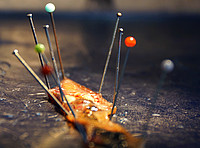“With dissection, you experience the structure of the animal with all your senses.”

After 1.5 weeks full of theoretical lectures that often convey a lot more information than school, I was excited to finally get to experience what I had learned “live and in color” with the dissection. Of course in the “Structure and Function of Animals” course theory is necessary, which is why the first 45 minutes were spent learning about the structure and phylogenetic classification of today’s animal, an earthworm.
But then (finally) the earthworms, which had been killed with ethanol, were distributed in the dissection trays. It was definitely strange to fix a dead earthworm with pins and make the first cut. But what then appeared was incredible.
I wouldn’t have thought than a worm would have such complex structures. Dissecting a living animal yourself, feeling the resistance to the scissors, smelling the slight scent of iron oxide, feeling how the organs are structured, and especially seeing everything spatially simply can’t be compared with looking at a graphic of a worm dissection in a textbook.
With dissection, you experience the structure of the animal with all your senses, which is why you can remember it better and it is easier to make connections to other animals. I personally gained great respect for these organisms because I had not been aware of their complex anatomy before.
Jonathan, 1st semester, Biology
The contributions include the personal and individual opinions of students and supervisors. They do not necessarily reflect the opinion of the University of Hohenheim.








